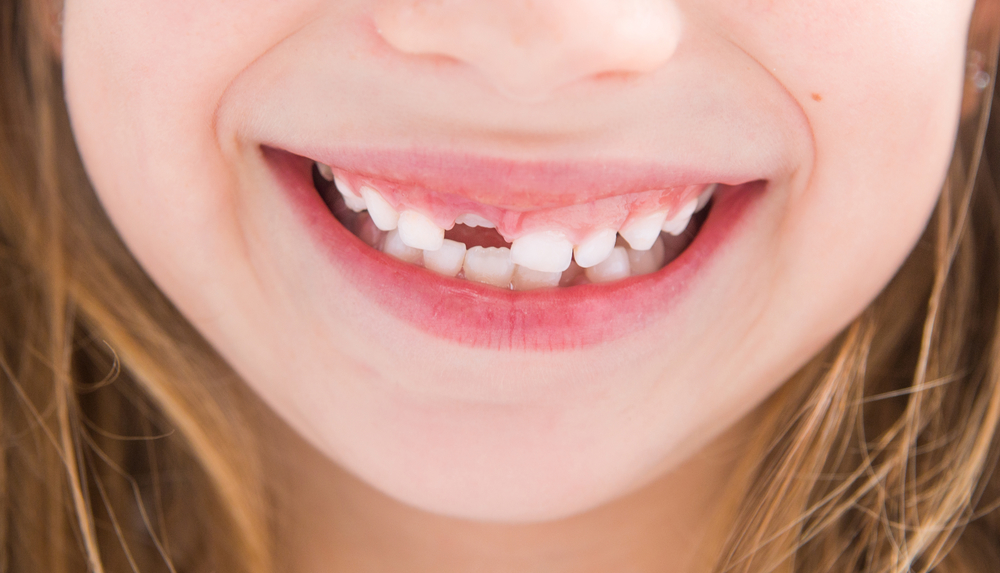
Losing that first baby tooth is an exciting time for parents and children alike. However, if you’re like most parents, It has likely been a while since you have pulled out a loose tooth. Tying a string to a doorknob and a loose tooth and slamming the door to yank it out isn’t quite the method we recommend for today’s kids, so it may be time for a refresher course.
Be as prepared as possible for that first lost tooth milestone by following these simple do’s (and don’ts) of losing baby teeth.
At What Age Do Children Start To Lose Baby Teeth?
Children typically begin to start losing their first set of teeth around the age of 6 or 7. All children are different, and some may start to lose teeth earlier or later than this general age. The first teeth to fall out are usually the baby teeth that came in first. A baby tooth does not begin to loosen until the permanent tooth underneath has started to push the baby tooth out of the shared socket. Once the baby tooth begins to loosen, it can take up to a few weeks before the tooth falls out.
If you notice that your child has a loose tooth that is “out of order” such as a back tooth that is loose before the front teeth have come out, talk to your dentist. A quick dental exam can determine if there is any reason to worry, or if the tooth seems to be on its own timeline.
If Your Child Loses a Tooth From an Injury
Accidents happen, and injuries to teeth are no exception. If your child’s tooth is loose from an injury, such as a fall, take your child to the dentist as soon as possible. During your checkup, your dentist will be able to check the stability of the baby tooth. In addition, the tooth will also be checked for infection or damage to the permanent tooth underneath.
Simple Steps To Pulling Teeth
If you feel that a loose tooth is ready to come out, you can help your child to pull it out by following these simple steps. By the 2nd or 3rd loose tooth, it’s likely your child will be ready to try the pulling process for themselves!
Wash your hands and wiggle the tooth back and forth with a clean tissue, making sure it’s ready to come out. If it’s ready, a little twisting will be necessary, and the tooth will pop out easily
Apply pressure to the area with a clean gauze pad if there is any minor bleeding. Bleeding should stop after a few minutes
Examine the gums to make sure no remains of the lost baby tooth are stuck in the socket. In most cases, the area will be clean, and you may even see the top of the adult tooth. Visit your dentist if any fragments of the tooth are left behind
Prepare the pulled tooth for a Tooth Fairy Visit
If you see any redness the next day or your child is complaining of excessive pain, you should make an appointment with your dentist to ensure the area is not infected
When To Wait
If a loose tooth in your child’s mouth is not yet ready to come out naturally, forceful attempts to remove it may pull on the sensitive roots and cause your child unnecessary pain. Pulling a child’s tooth that isn’t loose enough can also cause excessive bleeding, damage to the tissue, or lead to infection.
If a loose tooth seems significantly attached to the roots, always wait to pull out the tooth to keep losing teeth a positive experience for you and your child. Encourage kids to wiggle a loose tooth until it’s ready.
Oops! My Child Swallowed a Tooth
Swallowing a tooth or a piece of a broken tooth is not unusual. It can happen when your child’s tooth is already loose, or during a sporting event or an injury. Baby teeth are very small in size, and your child isn’t likely to notice they’ve swallowed a tooth until they realize the tooth is missing from the socket. In general, a tooth is digestible and will pass through the digestive system without causing any harm.
When To Seek Professional Help
If there is ever any concern over a loose tooth, consulting with your dentist is the best course of action. Your dentist can help reinforce good oral care routines and check for any signs of problems as your child begins to lose baby teeth. Call today to schedule a check-up for you or your child with Hinsdale Dentistry!